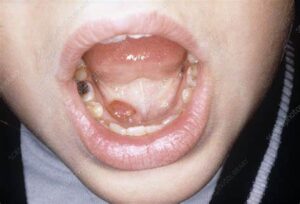Murray Hill Orthodontics
Contact
Hours
<ul id=”hours” style=”transition: height .3s ease;”>
<li>Monday: 9:00am – 9:00pm</li>
<li>Tuesday: 9:00am – 6:00pm</li>
<li>Wednesday: 9:00am – 9:00pm</li>
<li>Thursday: 9:00am – 9:00pm</li>
<li>Friday: 9:00am – 5:00pm</li>
</ul>
Murray Hill Orthodontics, located in the heart of New York, New York, is dedicated to providing exceptional orthodontic care in a warm and welcoming environment. Led by a team of experienced orthodontists, our practice combines personalized treatment plans with state-of-the-art technology to help patients achieve beautiful, healthy smiles. Whether you’re interested in traditional braces or clear aligners, Murray Hill Orthodontics offers a comprehensive range of orthodontic services to suit your needs.
Orthodontic Services
Traditional Braces
- Metal Braces: Time-tested orthodontic solution for correcting misaligned teeth and bite issues.
- Ceramic Braces: Clear or tooth-colored brackets for a more discreet orthodontic treatment option.
Clear Aligner Therapy
- Invisalign: Removable clear aligners for a virtually invisible way to straighten teeth without traditional braces.
- ClearCorrect: Transparent aligners that gradually shift teeth into alignment for a more aesthetically pleasing smile.
Comprehensive Orthodontic Care
Initial Consultation
- Orthodontic Evaluation: Thorough assessment to determine the most suitable treatment plan for your individual needs and goals.
- Customized Treatment Plan: Tailored orthodontic approach designed to achieve optimal results while considering your lifestyle and preferences.
Orthodontic Treatment
- Braces Adjustment: Regular visits to ensure braces or aligners are properly adjusted for consistent progress and comfort.
- Interceptive Orthodontics: Early intervention to address orthodontic issues in children and prevent more serious problems from developing.
Patient Experience
Comfortable Environment
- Modern Facility: State-of-the-art office equipped with advanced orthodontic technology for efficient and effective treatment.
- Relaxing Atmosphere: Comfortable and inviting environment to help patients feel at ease during their orthodontic appointments.
Personalized Care
- Individualized Attention: Dedicated orthodontic team committed to providing personalized care and addressing your specific concerns throughout your treatment journey.
- Open Communication: Transparent communication about your treatment plan, progress, and any adjustments needed to ensure the best possible outcome.
Pulpotomy
A pulpotomy is a dental procedure primarily performed on primary (baby) teeth to remove the infected portion of the dental pulp (the soft tissue inside the tooth) while preserving the vitality of the remaining healthy pulp tissue. This procedure is typically indicated when decay or trauma has reached the pulp chamber of the tooth, causing inflammation or infection, but the infection has not spread to the root canal system.
Here's an overview of the pulpotomy procedure:
- Indications:
- Pulpotomy is indicated when decay or trauma has affected the pulp tissue of a primary tooth, resulting in pulpitis (inflammation) or reversible pulpitis.
- The goal of the pulpotomy procedure is to remove the infected or inflamed portion of the pulp tissue while maintaining the vitality of the remaining healthy pulp tissue to preserve the function and longevity of the tooth.
- Preparation:
- Before performing a pulpotomy, the dentist will conduct a clinical examination and may take dental X-rays to assess the extent of decay or trauma and determine the suitability of the procedure.
- Local anesthesia is typically administered to numb the area surrounding the affected tooth and ensure the patient's comfort during the procedure.
- Procedure:
- Tooth isolation: The tooth and surrounding area are isolated using a dental dam or other protective barrier to maintain a clean and sterile field.
- Access: The dentist removes decayed or damaged tooth structure to access the pulp chamber of the affected tooth.
- Pulpotomy: Using specialized dental instruments, the dentist removes the infected or inflamed pulp tissue from the pulp chamber, typically leaving the healthy pulp tissue in the root canals intact.
- Hemostasis: The dentist may use a medicated material (such as ferric sulfate or formocresol) to control bleeding and promote hemostasis in the pulp chamber.
- Pulpotomy agent: A medicated material, such as mineral trioxide aggregate (MTA) or calcium hydroxide, is placed directly over the remaining healthy pulp tissue to promote healing and provide a protective barrier.
- Restoration: The access cavity created during the procedure is restored with a filling material, such as dental amalgam or composite resin, to seal the tooth and prevent recontamination or reinfection.
- Postoperative Care:
- Following the procedure, the patient may experience some discomfort or sensitivity, which can be managed with over-the-counter pain medication as needed.
- Patients are advised to follow postoperative instructions provided by the dentist, including dietary restrictions, oral hygiene practices, and any prescribed medications.
- Regular follow-up appointments are scheduled to monitor healing, assess the success of the procedure, and address any concerns or complications.
- Prognosis:
- The success of a pulpotomy depends on various factors, including the extent of decay or trauma, the quality of the pulpotomy procedure, and the patient's oral hygiene and compliance with postoperative care instructions.
- With proper care and maintenance, a tooth that has undergone pulpotomy can continue to function effectively for the duration of its natural lifespan, providing chewing function and aesthetics similar to a natural tooth.
In summary, pulpotomy is a dental procedure performed primarily on primary (baby) teeth to remove the infected portion of the dental pulp while preserving the vitality of the remaining healthy pulp tissue. It is indicated when decay or trauma has affected the pulp tissue of a primary tooth, resulting in inflammation or infection, but the infection has not spread to the root canal system. If you have a child who may require pulpotomy or if you have any questions about the procedure, it's important to consult with a pediatric dentist for a thorough evaluation and personalized treatment plan.
Ranula
A ranula is a type of mucocele that occurs in the floor of the mouth. It is characterized by the formation of a cystic swelling or bluish mass due to the accumulation of saliva from a ruptured or obstructed salivary gland duct, typically the sublingual gland. Ranulas are usually painless and benign, but they can cause discomfort or interfere with speaking, eating, or swallowing if they become large or symptomatic.
Here are some key points about ranulas:
- Types: Ranulas are classified into two main types based on their location within the floor of the mouth:
- Simple ranula: This type of ranula arises from the sublingual gland and presents as a cystic swelling beneath the tongue's mucosa. Simple ranulas may be unilateral or bilateral and typically appear as translucent or bluish in color.
- Plunging or cervical ranula: In this type, the ranula extends beyond the floor of the mouth into the neck, often along the submandibular space. Plunging ranulas may result from the rupture of a simple ranula or from direct extension of the sublingual gland duct into the neck.
- Causes: The exact cause of ranulas is not always clear, but they are thought to result from trauma, inflammation, or obstruction of the salivary gland ducts. Obstruction of the sublingual gland duct, often due to mucous plugs or calculi, leads to the accumulation of saliva within the gland and subsequent formation of a cystic swelling.
- Symptoms: Ranulas are typically painless and may go unnoticed until they become large enough to cause swelling or interfere with oral function. In some cases, ranulas may cause discomfort, difficulty speaking, eating, or swallowing, or a sensation of fullness or pressure in the floor of the mouth.
- Diagnosis: Diagnosis of ranulas is typically based on clinical examination and imaging studies, such as ultrasound, CT scan, or MRI, which can help visualize the size, location, and extent of the lesion. Fine needle aspiration or biopsy may be performed to confirm the diagnosis and rule out other potential causes of a neck mass.
- Treatment: Treatment of ranulas depends on the size, location, and symptoms of the lesion. Small, asymptomatic ranulas may be managed conservatively with observation and periodic follow-up. Symptomatic or enlarging ranulas may require intervention, such as aspiration (drainage) of the cystic fluid, marsupialization (creation of a surgical opening) to promote drainage and prevent recurrence, or surgical excision of the ranula and associated salivary gland tissue. Recurrent or refractory ranulas may necessitate more extensive surgical procedures or referral to a specialist.
In summary, a ranula is a cystic swelling in the floor of the mouth caused by the accumulation of saliva from a ruptured or obstructed salivary gland duct. While usually painless and benign, ranulas can cause discomfort or interfere with oral function if they become symptomatic or enlarging. Treatment options vary depending on the size, location, and symptoms of the ranula but may include observation, drainage, or surgical excision. Early diagnosis and appropriate management are important for preventing complications and achieving favorable outcomes.




